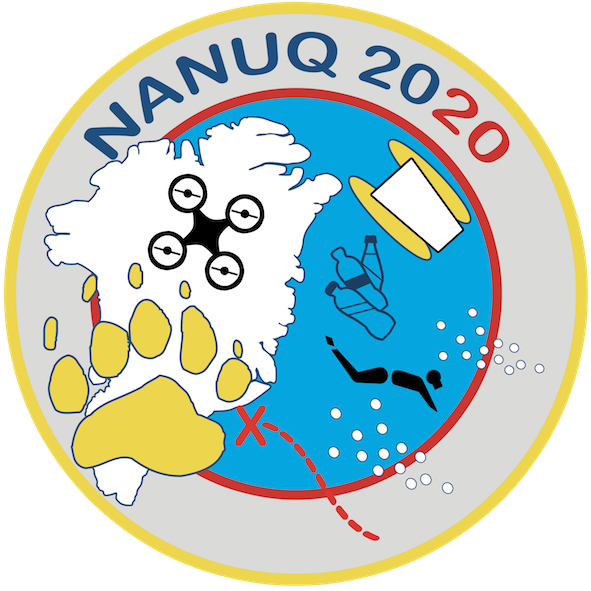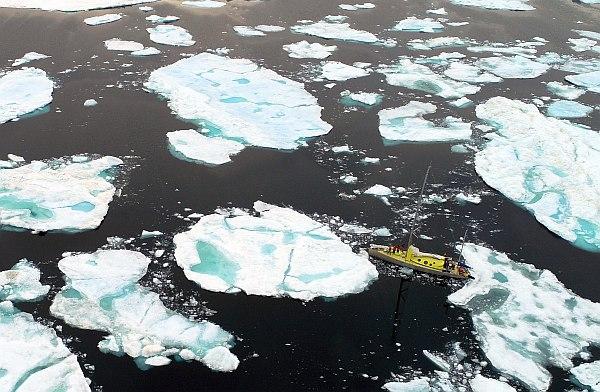A few days after the end of NANUQ2020, some initial data have been drawn out of the experience by the Sailworks workgroup, builders of NANUQ. Probably the season 2020 has put the boat to the biggest challenges in her operational life. Drifting ice, but also sailing considerable distances in a tight agenda, put the vessel and the crew to the test. To date NANUQ (an Integral 60, designed by Architect Peter Gallinelli) is most likely to be one the most economical and versatile full-blown ocean research vessels sailing today.
Based in the experience of her 20 trips in northern and Arctic waters, it would be reasonable to conclude that not only NANUQ is more than a good blue water sailboat (e.g. 700 NM in 3.5 days), but that also stood up well to severe pack ice, as she has shown in banging into floes several times her own weight … without a scratch. The only exception was the starboard (i.e. right) rudder that got damaged under the pressure of big floes heavily pushing from all sides while drifting past a headland. “We didn’t manage to lift the rudder in time” stated Peter Gallinelli. “The breaking is part of a design feature to prevent serious damage to the hull structure. NANUQ can reasonably run on a single rudder allowing time for repair that can be managed on board using glass fibre and epoxy resin. That is exactly what we did.” NANUQ features a redundant, 2 fins rudder system, with all metal mechanisms and fiberglass, rotating fins, which can be lifted backwards depending on need, to prevent damage against ice or submerged obastacles. If a serious impact occurs, the fin is supposed to break away from the rudder mechanism to prevent damaging it; being a fiberglass component, it then floats and can be recovered onboard for repair. This being the conceptual scheme, the actual damage NANUQ suffered in her recent ordeal in the ice was less serious than envisioned; the rudder was damaged, but was still operable when taken inside the cabin for repair. Gallinelli summarizes his strategy as a nautical builder: “A boat is not only about being safe, but also about feeling safe and comfortable. Despite extreme conditions, all crew totally appreciated the adventure and had a great time. A good boat is 50% of success, the rest is human nature and the crew accounts for the other 50% by participating and being part of a well organized and passionate team. And here, teamwork is more important than knowledge!”
Compared to all other similar (and, a fortiori, larger) vessels, NANUQ has a very low environmental footprint, remaking optimal use of resources and keeping things simple and manageable. “Whilst motor vessels use literally thousands of litres of fuel, NANUQ is capable of being self sufficient for up to 1 year and can hang out in the most remote regions for long periods of time. I believe she is very complementary to [traditional, large] research vessels by her low operational budget making long term survey more accessible. Plus, her small size and shallow draft allow to sail into places where a ship could not go”.









































































